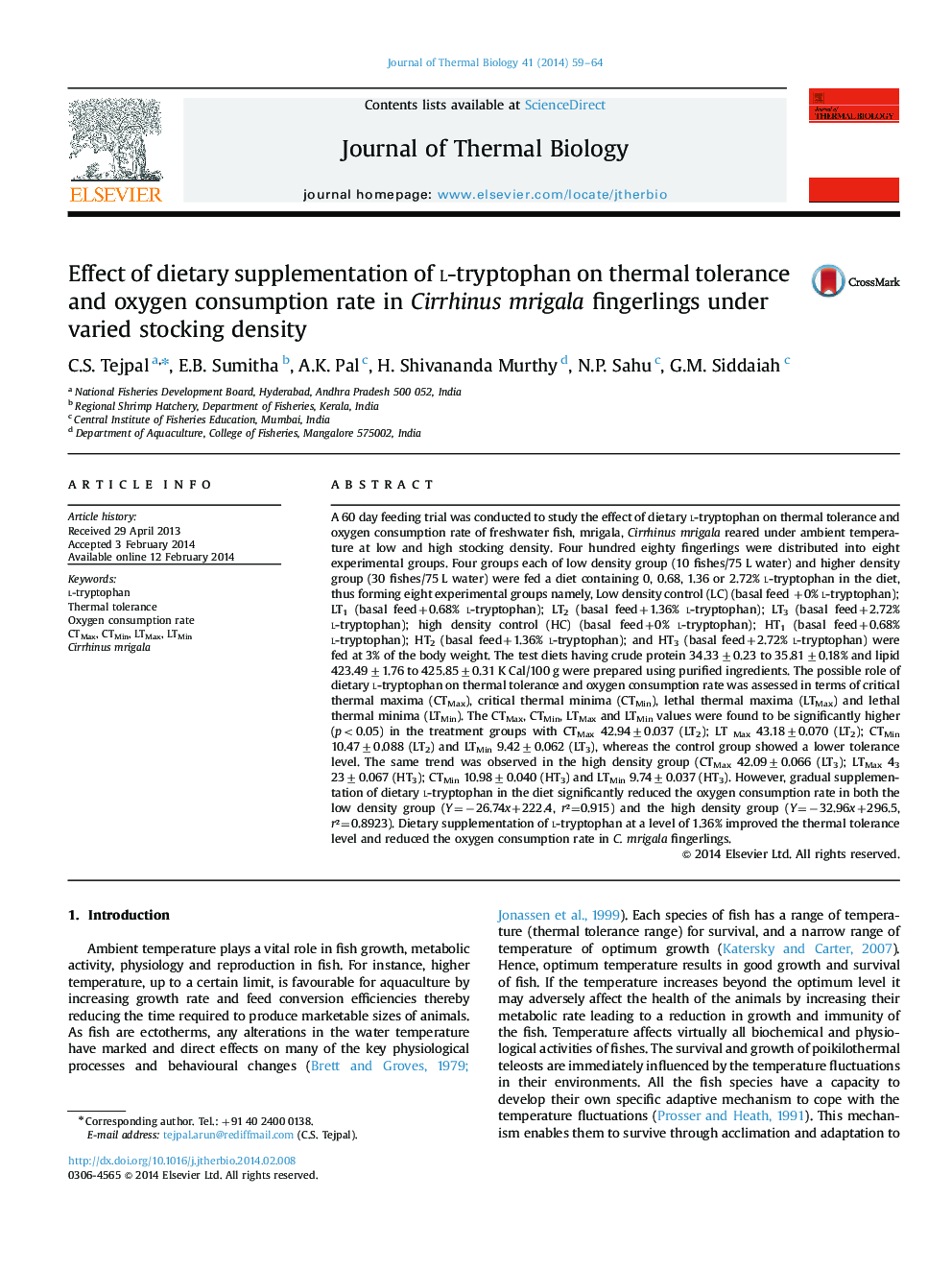| Article ID | Journal | Published Year | Pages | File Type |
|---|---|---|---|---|
| 2842949 | Journal of Thermal Biology | 2014 | 6 Pages |
•This experiment was designed to study the effect of l-tryptophan on thermal tolerance and oxygen consumption rate.•Cirrhinus mrigala fingerlings exposed at low and high stocking density groups rate under varied stocking density.•This experiment was conducted in thermostatic aquaria.•Dietary supplementation of l-tryptophan at @ 1.36% found to enhance thermal tolerance and reduce the oxygen consumption rate.
A 60 day feeding trial was conducted to study the effect of dietary l-tryptophan on thermal tolerance and oxygen consumption rate of freshwater fish, mrigala, Cirrhinus mrigala reared under ambient temperature at low and high stocking density. Four hundred eighty fingerlings were distributed into eight experimental groups. Four groups each of low density group (10 fishes/75 L water) and higher density group (30 fishes/75 L water) were fed a diet containing 0, 0.68, 1.36 or 2.72% l-tryptophan in the diet, thus forming eight experimental groups namely, Low density control (LC) (basal feed +0% l-tryptophan); LT1 (basal feed+0.68% l-tryptophan); LT2 (basal feed+1.36% l-tryptophan); LT3 (basal feed+2.72% l-tryptophan); high density control (HC) (basal feed+0% l-tryptophan); HT1 (basal feed+0.68% l-tryptophan); HT2 (basal feed+1.36% l-tryptophan); and HT3 (basal feed+2.72% l-tryptophan) were fed at 3% of the body weight. The test diets having crude protein 34.33±0.23 to 35.81±0.18% and lipid 423.49±1.76 to 425.85±0.31 K Cal/100 g were prepared using purified ingredients. The possible role of dietary l-tryptophan on thermal tolerance and oxygen consumption rate was assessed in terms of critical thermal maxima (CTMax), critical thermal minima (CTMin), lethal thermal maxima (LTMax) and lethal thermal minima (LTMin). The CTMax, CTMin, LTMax and LTMin values were found to be significantly higher (p<0.05) in the treatment groups with CTMax 42.94±0.037 (LT2); LT Max 43.18±0.070 (LT2); CTMin 10.47±0.088 (LT2) and LTMin 9.42±0.062 (LT3), whereas the control group showed a lower tolerance level. The same trend was observed in the high density group (CTMax 42.09±0.066 (LT3); LTMax 43 23±0.067 (HT3); CTMin 10.98±0.040 (HT3) and LTMin 9.74±0.037 (HT3). However, gradual supplementation of dietary l-tryptophan in the diet significantly reduced the oxygen consumption rate in both the low density group (Y=−26.74x+222.4, r²=0.915) and the high density group (Y=−32.96x+296.5, r²=0.8923). Dietary supplementation of l-tryptophan at a level of 1.36% improved the thermal tolerance level and reduced the oxygen consumption rate in C. mrigala fingerlings.
